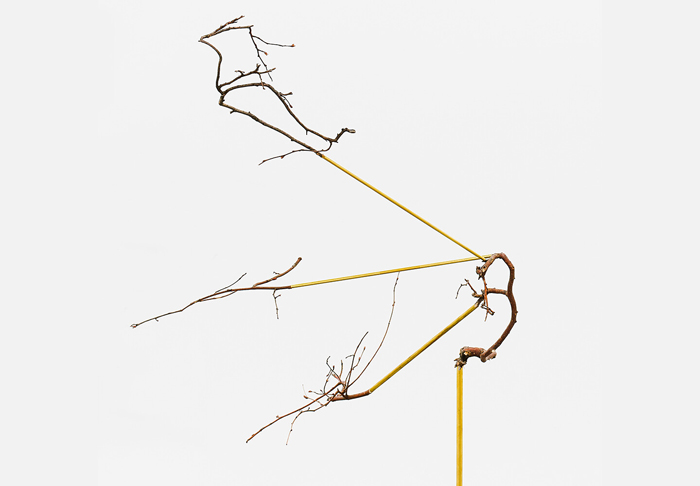Press Release
Are prophecies akin to interpretations, memories, sketches or schematic images? What do they tell us? Do they unlock new realms in which we can think and act? Such questions form the starting point of the exhibition Notes of a Seeress, which takes its name from a 1958 drawing by Joseph Beuys.

Notes of a Seeress
Ifa-Galerie, Berlin (Germany)
30.04 - 13.06.2021

Exhibition April 30 -

© ArtCatalyse International / Marika Prévosto 2021. All Rights Reserved
To mark the 100th anniversary of his birth, the ifa Gallery Berlin is presenting drawings by Joseph Beuys from the ifa's art collection in a dialogue with the artistic positions of Andrea Acosta, Anne Duk Hee Jordan and Sara Ouhaddou. Both Beuys and the featured artists address overlooked, disregarded, handed-
Andrea Acosta creates immersive works using found objects. Starting from a small detail or a tactile experience, she composes poetic installations that incorporate drawings, photographs and sculptures. Like a field worker, she collects leaves, twigs, roots and other natural fragments that she later reassembles into new configurations. In her installation Wald, she uses ‘prostheses’ to grant broken twigs a second life. Can the sum of the parts make up a whole again? Acosta’s creative practice spins a web of technical and organic elements that explores the possibilities of coexistence, togetherness and tension in the urban realm.
Joseph Beuys's graphic work reflects the immediacy of the connection between mind and body in space. In it he found an experimental domain for the interconnectedness of the material and the immaterial and developed his sculptural way of thinking as well as his open concept of work. He created a graphic oeuvre full of dynamism, repetition, of empathetic vision—the core and foundation for his artistic and political activity: “I can only say that if I had not done all these drawings, I could not have done my political work.” Beuys left an indispensable imprint as an artist, storyteller, teacher, and activist. He was an instigator, an animator, an agitator, a provocateur, a modifier—he was unwavering. (Göz Adriani, 1989).
Anne Duk Hee Jordan investigates the complex dialogue between things—whether conscious, animate, processed or malformed. Mischievously creating ecosystems like the figure of the trickster, she immersively negotiates motives of transformation and transience, with one foot in the future and the other in utopia. Her drawings free time and space from their static components and present vividly coloured counter-
Sara Ouhaddou transposes overlooked cultural realities and knowledge repositories into new patterns, forms, and narratives. For the work in her Woven/Unwoven series, she used discarded rubber mats as a foundation upon which she created, in a collective and collaborative process, new designs. Embroidery that would otherwise adorn upscale garments are designed by young women from Téouan, thus feeding them into a new cycle. On the one hand, the series of drawings entitled Al Kalima, meaning “words” in Arabic, are preliminary studies for the glassblowers of Marrakech, a group threatened by extinction; on the other hand they bring to mind calligraphy, whose abstraction opens up new languages and their respective universes. Sarah Ouhaddou looks for ways of writing where nothing is equal, nothing is parallel and nothing is opposite, where things are multidimensional.
Curated by Inka Gressel and Susanne Weiß.
Andrea Acosta, Assisted Forest, 2020. Found objects, brass rods and clamps, dimensions variable. © Andrea Acosta.
